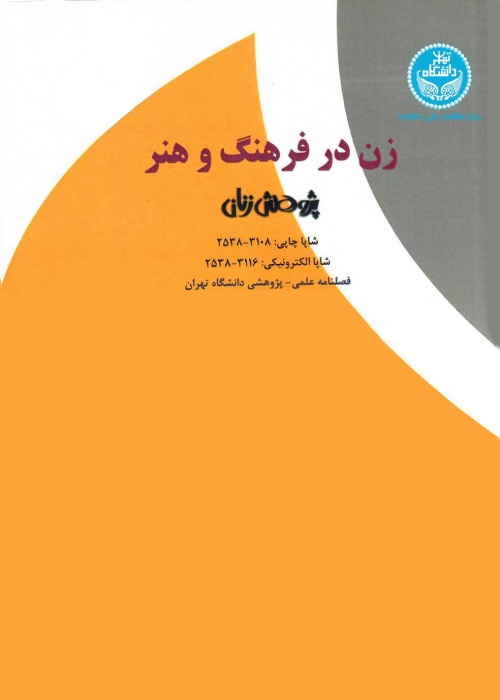Study of Women's Identity in Artistic Designs of Early Centuries of Islam
Author(s):
Abstract:
To find the identity، position and status of women in the early centuries of Islamic government، it is necessary to rely on reasonable documents. The pictorial resources and designs remained from artistic works of these times are among the available documents which can be studied by focussing on the position of women in this period. The designs of figures remained from the early centuries of Islam may be investigated in the murals of Omavis’ castles، Abbasians’ palaces، f manuscripts of Abbasian age and also in the designs of other artists. In these designs، the apparent identity of woman may be recognized as sacred، governor، minstrel، mother or spouse who has been portrayed with diverse covers and make ups. The researchers may realize women’s social identity and situation at that time by analyzing their decorations، designs and covers. It is necessary to mention that in the early centuries of Islam، art and artistic works did not have any considerable importance and value and no art was formed by Islamic beliefs. For this reason، the works remained from that time had admirable intellectual sediments with them. But from the third centuries onward، we witness considerable changes in artistic works due to the growth of Islamic beliefs. Generally، from this period onward we witness the figures being simplified as well as the growth of abstract designs due to emphasis on “prohibition of depiction” in Islamic beliefs. This depiction constraint had a deep influence on the lack of any realistic imaging during the history of Islamic art. As a result، what is dealt with in this paper regarding the designs of women’s figures (from the respect of pictorial aspect) has a decoration-oriented aspect. In the works of Islamic art، human’s figure has mostly appeared beside the designs of flowers، plants and birds it is only the cover or pictorial positions of the figures which gives a limited and definite identity to the characteristics of men and women and has given an ideal، mythological or mythical aspect to them and assists us in this research.
Keywords:
Language:
Persian
Published:
Journal of WOman in Culture Arts, Volume:4 Issue: 4, 2012
Page:
59
magiran.com/p1069174
دانلود و مطالعه متن این مقاله با یکی از روشهای زیر امکان پذیر است:
اشتراک شخصی
با عضویت و پرداخت آنلاین حق اشتراک یکساله به مبلغ 1,390,000ريال میتوانید 70 عنوان مطلب دانلود کنید!
اشتراک سازمانی
به کتابخانه دانشگاه یا محل کار خود پیشنهاد کنید تا اشتراک سازمانی این پایگاه را برای دسترسی نامحدود همه کاربران به متن مطالب تهیه نمایند!
توجه!
- حق عضویت دریافتی صرف حمایت از نشریات عضو و نگهداری، تکمیل و توسعه مگیران میشود.
- پرداخت حق اشتراک و دانلود مقالات اجازه بازنشر آن در سایر رسانههای چاپی و دیجیتال را به کاربر نمیدهد.
In order to view content subscription is required
Personal subscription
Subscribe magiran.com for 70 € euros via PayPal and download 70 articles during a year.
Organization subscription
Please contact us to subscribe your university or library for unlimited access!


